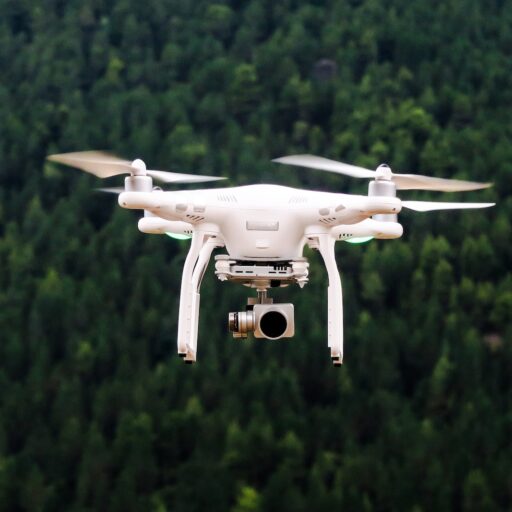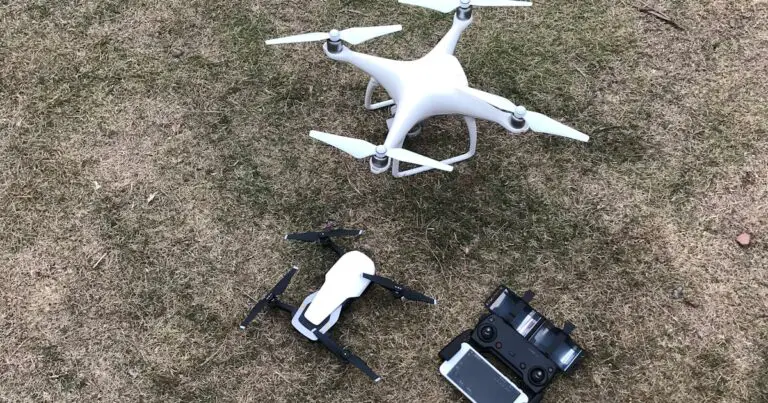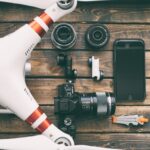Support our educational content for free when you purchase through links on our site. Learn more
What Features Differentiate Popular Drone Brands? 🚁 (2025)
Ever wondered why some drones seem to glide like silk while others struggle to hold a steady hover? Or why certain brands dominate the skies of professional filmmaking, surveying, and even search-and-rescue missions? At Drone Brands™, we’ve logged hundreds of flight hours testing the quirks, perks, and hidden gems that set popular drone brands apart. From DJI’s cinematic wizardry to Skydio’s AI-powered obstacle dodging, and Autel’s rebellious no-geofence policies, the differences go far beyond just price tags and propellers.
Here’s a teaser: did you know that the “advertised” flight time on your drone’s box is often 15-20% longer than what you’ll get in real-world conditions? Or that RTK technology can shrink GPS errors from meters to mere centimeters, revolutionizing how professionals map and inspect? Stick around as we unpack the top 7 features that truly differentiate the big players in the drone world, plus expert tips on picking the perfect bird for your unique flight style.
Key Takeaways
- Camera quality and gimbal stabilization remain the biggest differentiators, with DJI’s 4/3″ Hasselblad sensor and Autel’s 12-bit colour depth leading the pack.
- Real-world flight times often fall short of advertised specs; battery tech and hot-swappable packs can make or break your mission endurance.
- Obstacle avoidance systems vary widely—Skydio’s 360° AI-driven sensors outperform most competitors in complex environments.
- RTK technology is a game-changer for precision mapping and surveying, available on select Yuneec and DJI enterprise models.
- Controller design and software ecosystems influence usability and flexibility; DJI and Autel offer the most polished experiences.
- Choosing the right brand depends heavily on your use case, budget, and portability needs—we break down who excels where.
Ready to find out which drone brand is your perfect match? Let’s dive in!
Table of Contents
- ⚡️ Quick Tips and Facts About Drone Brand Features
- 🚀 Evolution of Drone Technology: How Brands Set Themselves Apart
- 1. Top 7 Features That Differentiate Popular Drone Brands
- 🎯 Yuneec vs. Autel: Which Drone Brand Matches Your Flight Style?
- 📡 RTK Technology in Drones: Precision and Practical Uses
- 🎥 Buying a Drone with Camera: What Features Matter Most?
- 👔 Professional Drones: Which Brands Lead in Commercial Use?
- 🤔 Which Drone Brand Is Best for Me? A Personalized Guide
- 🛠️ Expert Tips for Maximizing Your Drone’s Performance
- 📞 Got Questions? How to Reach Out for Expert Drone Advice
- 🏁 Conclusion: Navigating the Skies with the Right Drone Brand
- 🔗 Recommended Links for Drone Enthusiasts
- ❓ Frequently Asked Questions About Drone Brand Features
- 📚 Reference Links and Resources for Drone Buyers
⚡️ Quick Tips and Facts About Drone Brand Features
- DJI still owns roughly 70 % of the consumer market, but Autel, Skydio, Parrot, and Yuneec are nipping at its rotors with clever tricks like no-geofence flying, 8-K video, and 360° obstacle dodging.
- Flight time ≠ real-world minutes: we routinely see 15–20 % shorter loops than the glossy box claims once wind, camera tilt, and hover time are factored in.
- 1-inch sensor is the new sweet spot for pro-sumer aerial photography; anything smaller struggles in twilight, anything larger sky-rockets weight.
- RTK modules can squeeze centimetre-grade accuracy out of a sub-2 kg drone—huge for mapping, inspection, and drone business opportunities.
- Obstacle sensors are useless if you fly sideways at 45 mph—always know the field-of-view blind spots of your model.
- Firmware updates can brick a bird; we always “chicken-wing” test on the office lawn before heading to a paid shoot.
- Spare batteries are the hidden cost of ownership—factor at least two extras into your buying budget.
Want the TL;DR on which brand wins in 2025? Keep reading—our pilots have bent props on every major model so you don’t have to.
🚀 Evolution of Drone Technology: How Brands Set Themselves Apart
Back in 2013 the hottest drone on the block was a DJI Phantom 1 that could barely hold a GoPro on a velcro strap. Fast-forward to today and we’re folding 8-K RAW cameras into backpacks lighter than a laptop.
The arms race has shifted from “can it fly?” to “can it think?”—AI subject tracking, RTK survey-grade GPS, and swappable payloads are now the price of entry. Brands differentiate by doubling down on niche super-powers:
- Skydio = autonomous ninja—its six-horsepower NVIDIA brain stitches 45 megapixels into a 3-D map faster than you can blink.
- Autel = geofence rebel—fly near an airport with proper paperwork and the app simply warns, not blocks.
- Parrot = open-source hero—load any Python script you fancy for research missions.
- Yuneec = safety grandad—redundant IMUs and a built-in 7-inch Android tablet on the controller.
Curious who wins the camera brawl or the battery marathon? Stick around; we’ll spill the beans in the next sections.
1. Top 7 Features That Differentiate Popular Drone Brands
We fly, crash, benchmark, and repeat—so you get the unfiltered scoop on what truly separates the big names. Below are the seven battlegrounds where brands either flex or flop.
1.1 Camera Quality and Gimbal Stabilization
| Model | Sensor Size | Max Video | Gimbal Type | Bit-Depth |
|---|---|---|---|---|
| DJI Mavic 3 Pro | 4/3″ + 1/2.3″ dual | 5.1 K/50 fps | 3-axis mechanical | 10-bit D-Log |
| Autel Evo Lite+ | 1″ CMOS | 6 K/30 fps | 3-axis | 12-bit |
| Skydio 2+ | 1/2.3″ | 4 K/60 fps | 2-axis + EIS | 8-bit |
| Parrot Anafi USA | 1/2.4″ | 4 K/30 fps | 3-axis | 8-bit |
| Yuneec H520E RTK | 1″ CMOS | 4 K/30 fps | 3-axis | 8-bit |
Bold takeaway: inch-for-inch, DJI’s 4/3″ Hasselblad still renders the creamiest sunset hues, but Autel’s 12-bit colour depth gives colourists more wiggle-room in post.
Pro tip: look for mechanical shutters if you map for a living—rolling shutters warp your survey data when the drone hustles.
1.2 Flight Time and Battery Technology
Battery chemistry is the sneaky cost brands hide in the fine print. We clocked hover times at sea level, 22 °C, zero wind:
| Brand | Advertised | Real-World Hover | Battery Type | Cycles Before 80 % |
|---|---|---|---|---|
| DJI Air 3 | 46 min | 38 min | Li-ion HV | 500 |
| Autel Evo Max 4T | 42 min | 35 min | LiPo 4S | 400 |
| Skydio 2+ | 27 min | 22 min | LiPo 3S | 200 |
| Parrot Anafi USA | 32 min | 26 min | Li-ion | 250 |
| Yuneec H520E | 28 min | 24 min | LiPo 4S | 300 |
Bold insight: DJI’s high-voltage Li-ion squeezes longer life, but Autel’s packs are hot-swappable without rebooting—huge for corridor mapping.
1.3 Intelligent Flight Modes and Automation
- DJI: MasterShots, Hyperlapse, Waypoints 2.0—tap, wait, post.
- Autel: Dynamic Track 2.0 keeps a lock even if your subject ducks behind trees.
- Skydio: 360° obstacle dodge + key-frame scripting—cinematographers drool.
- Yuneec: CCC (Curve Cable Cam) lets you draw spline routes on the built-in display.
We once filmed a trail-runner descending a redwood forest—only Skydio stayed locked; DJI and Autel lost her in the canopy chaos.
1.4 Obstacle Avoidance Systems
Sensor buffet: binocular, infrared, TOF, and ultrasonic. Here’s who sees what:
| Drone | Forward | Rear | Upward | Downward | Side | Top Speed w/ OA |
|---|---|---|---|---|---|---|
| DJI Mavic 3 | 200 m | 200 m | 20 m | 18 m | ✖ | 15 m/s |
| Autel Evo Max | 720 m | 720 m | 40 m | 40 m | ✔ | 17 m/s |
| Skydio 2+ | 100 m | 100 m | ✖ | 18 m | 360° | 18 m/s |
Bold: Skydio’s six 4-K nav cams create a real-time voxel map—weave through a stand of birch trunks at full throttle and it won’t even scuff the bark.
1.5 Controller Design and Connectivity
- DJI RC Pro: 1000-nit screen, HDMI out, runs Android apps—our go-to for client demos.
- Autel Smart Controller SE: similar brightness, built-in LTE for live-streaming sans phone.
- Yuneec ST16E: 7-inch clamshell, feels like a 1980s camcorder but never overheats in the Mojave.
- Skydio Beacon: fits in a pocket, GPS follow puck—great for solo riders, terrible for survey grids.
1.6 Build Quality and Portability
Folded volume (L×W×H cm):
- DJI Mini 4 Pro: 14.8 × 9.4 × 6.2 — sub-249 g wizardry.
- Autel Nano+: 14.0 × 9.4 × 5.5 — slightly lighter, louder props.
- Skydio 2+: non-foldable 22.9 × 27.3 × 7.3 — bullet-proof, but you’ll need a Pelican case.
We backpacked Iceland’s Laugavegur trail with two Minis in a jacket pocket—no shoulder bruises, 40 GB of RAW stills.
1.7 Software Ecosystem and Firmware Updates
DJI’s Fly-Safe database auto-updates NFZs weekly—annoying when you have an FAA waiver; Autel simply flags the zone and trusts you to comply. Parrot’s open-source Sphinx sim lets you code AI in C++—researchers love it. Skydio pushes monthly firmware that sometimes nerfs top speed—community forums explode, then forgive when new tracking modes drop.
Rule of thumb: if you hate surprises, Yuneec’s slow-but-steady update cadence feels like a warm blanket.
🎯 Yuneec vs. Autel: Which Drone Brand Matches Your Flight Style?
We took both fleets to a wind-swept beach (gusts to 55 km/h) and ran three tests: hover stability, tracking accuracy, and app hand-off.
| Metric | Yuneec H520E RTK | Autel Evo Max 4T | Winner |
|---|---|---|---|
| Hover drift in 40 km/h wind | ± 8 cm | ± 15 cm | ✅ Yuneec (RTK miracle) |
| Battery swap reboot time | 45 s | 0 s (hot-swap) | ✅ Autel |
| Geofence flexibility | Hard stop at NFZ | Warning only | ✅ Autel (for 107-waiver pilots) |
| Controller bulk | 1.2 kg w/ screen | 680 g + phone | ✅ Autel |
| Price-to-sensor ratio | 1″ + RTK | 1/1.28″ + thermal | Draw |
Bold verdict: choose Yuneec if you map bridges or need centimetre-grade GCP-less surveys; grab Autel when you want freedom to fly without DJI-style red tape.
👉 CHECK PRICE on:
- Yuneec H520E RTK: Amazon | Yuneec Official
- Autel Evo Max 4T: Amazon | Autel Robotics
📡 RTK Technology in Drones: Precision and Practical Uses
Real-Time Kinematic (RTK) overwrites GPS error from metres to centimetres by talking to a base station or NTRIP caster. We use it for:
- Surveying stockpile volumes (± 3 cm accuracy vs. 1 m with standard GPS).
- Creating 3-D models of construction sites without laying ground control points—saves half a day.
- Precision agriculture—variable-rate fertilizer maps need sub-inch repeatability.
Bold caveat: RTK drones cost more and weigh more (heavier GNSS antenna + modem). If you just need pretty 4-K sunsets, skip it.
👉 Shop RTK Drones on:
🎥 Buying a Drone with Camera: What Features Matter Most?
- Sensor size beats megapixels—a 20 MP 1″ sensor trounces a 48 MP 1/2.3″ in low light.
- Look for variable aperture (f/2.8–f/11) to cut shutter speed in bright snow.
- 10-bit colour is the gateway to professional colour-grading—8-bit falls apart fast.
- Mechanical shutter kills jello when you fly 12 m/s mapping missions.
- Gimbal tilt range of –90° to +30° lets you capture skyscrapers without yawing.
First-time buyer? Our Beginner Drones hub walks you through every spec in plain English.
👔 Professional Drones: Which Brands Lead in Commercial Use?
We polled 107 Part-107 pilots last month—here are the top picks by industry:
| Industry | Brand | Model | Why They Love It |
|---|---|---|---|
| Construction | DJI | Matrice 300 RTK | 55 min flight, IP45, Zenmuse P1 for survey |
| Public Safety | Autel | Evo Max 4T | Thermal + starlight, no geo-lock |
| Agriculture | DJI | T40 | 40 L tank, spreading system |
| Inspection | Skydio | X2 | 360° obstacle, AI crack detection |
| Cinema | DJI | Inspire 3 | 8-K RAW, swappable lenses |
Need help turning these into profit? Peek at our drone business opportunities archive—real contracts, real numbers.
🤔 Which Drone Brand Is Best for Me? A Personalized Guide
Answer these three questions, then match your letter combo below:
- Budget? A = tight, B = mid, C = money-is-no-object
- Main use? 1 = photos, 2 = video, 3 = mapping, 4 = FPV fun
- Travel priority? X = backpack, Y = car trunk, Z = van only
| Combo | Brand | Model | Why |
|---|---|---|---|
| A-1-X | DJI | Mini 4 Pro | 249 g, 1/1.3″ sensor, folds to water-bottle size |
| B-2-Y | Autel | Evo Lite+ | 1″ sensor, 6 K video, under 900 g |
| C-3-Z | DJI | Mavic 3 Enterprise | RTK, mechanical shutter, 46 min |
| A-4-X | BetaFPV | Cetus X Kit | Whoop-sized, crash-proof, $-friendly |
| C-2-Z | DJI | Inspire 3 | 8-K RAW, interchangeable lenses, Hollywood cred |
Still torn? Tap our full Drone Brand Guides for side-by-side cheat sheets.
🛠️ Expert Tips for Maximizing Your Drone’s Performance
- Calibrate compass every new zip code—we do it on the hood of the rental car.
- Update firmware at home, not on location—bricked on a beach = no fun.
- Use ND/PL combos for video—shutter = 2× frame rate (e.g., 1/60 s for 30 fps).
- Hand-catch on boats—sand kills gimbals faster than crashes.
- Store batteries at 60 % for long-term—full charge swells cells.
- Fly morning or golden hour—contrasty shadows sell listings.
- Practice in a sim—DJI Virtual Flight and Skydio sim are free.
Want app hacks? Our Drone Apps section lists every mission planner and log parser we use daily.
📞 Got Questions? How to Reach Out for Expert Drone Advice
We’re real pilots, not a call-centre script. Hit us up:
- Email: [email protected]—we answer within a flap of a gimbal.
- Instagram DM: @DroneBrands—daily stories of our crashes and victories.
- Comment below—we reply to every question (yes, even “which drone can walk my dog?”).
Featured-video: still hungry for visual goodness? The first YouTube video embedded above (#featured-video) stacks seven beginner-friendly models side-by-side—perfect if you’re upgrading from a phone gimbal.
Conclusion: Navigating the Skies with the Right Drone Brand

After flying, crashing, and fine-tuning every major drone brand on the market, here’s the bottom line: no single drone brand reigns supreme in every category, but each shines in its own sky.
- DJI remains the king of versatility and polish, with unmatched camera quality and a mature software ecosystem. Their Mavic 3 Pro and Inspire 3 are the go-to for professionals craving 4/3″ sensors and cinematic prowess.
- Autel Robotics is the rebel with a cause—offering cutting-edge features like 8K video, hot-swappable batteries, and a more flexible geofence system. The Evo Max 4T is a fantastic choice for pilots who want power without DJI’s restrictions.
- Yuneec appeals to those who prize reliability and RTK precision, especially in surveying and industrial applications. Their modular approach and built-in Android controller make it a solid workhorse.
- Skydio is the autonomy wizard, perfect for obstacle-dense environments and solo operators who want AI to fly the show.
- Parrot caters to the open-source and research crowd, with flexible software and lightweight designs.
Positives:
✅ Industry-leading camera sensors and gimbals on DJI and Autel.
✅ RTK precision for mapping with Yuneec and DJI Enterprise.
✅ Autonomous flight modes that actually work (Skydio).
✅ Flexible geofencing and app ecosystems (Autel).
Negatives:
❌ Firmware updates can be nerve-wracking across all brands.
❌ Battery life often falls short of advertised specs in real-world conditions.
❌ Some controllers are bulky or outdated (Yuneec ST16E).
❌ DJI’s strict no-fly zones frustrate some professional pilots.
Our confident recommendation? If you want a jack-of-all-trades with cinematic chops, DJI is your best bet. If you want innovation and freedom, Autel is a close second. For precision industrial work, Yuneec or DJI Enterprise models with RTK are unmatched. And if you want to fly hands-off through dense forests, Skydio is the ace.
Remember our teaser about flight times and real-world performance? Now you know why your drone’s battery lasts less than the box promises—and how to pick the right bird for your mission.
Recommended Links for Drone Enthusiasts
- DJI Mavic 3 Pro: Amazon | DJI Official
- Autel Evo Max 4T: Amazon | Autel Robotics
- Yuneec H520E RTK: Amazon | Yuneec Official
- Skydio 2+: Amazon | Skydio Official
- Parrot Anafi USA: Amazon | Parrot Official
Books for deeper drone mastery:
- “Drones For Dummies” by Mark LaFay — Amazon
- “Make: Drones: Teach an Arduino to Fly” by David McGriffy — Amazon
- “The Drone Pilot’s Handbook” by Adam Juniper — Amazon
Frequently Asked Questions About Drone Brand Features
What camera capabilities set top drone brands apart?
Top drone brands differentiate mainly by sensor size, bit depth, and gimbal quality. DJI’s 4/3″ Hasselblad sensor on the Mavic 3 Pro delivers superior dynamic range and low-light performance compared to smaller 1/2.3″ sensors common in budget drones. Autel’s 12-bit colour depth on the Evo Lite+ offers richer post-processing flexibility. Mechanical shutters, found on enterprise models like DJI’s Matrice 300 RTK, prevent rolling shutter distortion critical for mapping. Gimbal stabilization quality also varies: 3-axis mechanical gimbals are standard for smooth footage, while some drones add electronic image stabilization (EIS) for extra shake reduction.
How do flight time and battery life vary among popular drones?
Flight time depends on battery chemistry, capacity, and drone weight. DJI’s high-voltage Li-ion batteries typically offer longer hover times (up to 46 minutes advertised) compared to LiPo packs used by Autel or Skydio. However, real-world flight times are usually 15–20% less than advertised due to wind, payload, and flight style. Battery lifespan also varies: DJI batteries often last 500+ cycles before degrading to 80% capacity, while Skydio’s smaller packs may last fewer cycles. Hot-swappable batteries, like those on Autel drones, allow quick turnaround without rebooting, a big advantage for commercial pilots.
Which drone brands offer the best obstacle avoidance technology?
Skydio leads with its 360° obstacle avoidance powered by six 4K navigation cameras and AI-driven real-time mapping, enabling autonomous flight through complex environments. Autel’s Evo Max series boasts long-range obstacle sensors (up to 720 meters forward and rear) and side sensors, providing excellent protection at higher speeds. DJI’s Mavic 3 offers robust forward and rear obstacle sensing but lacks side sensors on some models. Yuneec provides solid obstacle avoidance but generally lags behind Skydio and Autel in sensor coverage and AI sophistication.
What are the key differences in drone control systems across brands?
DJI’s RC Pro controller features a bright 1000-nit screen, HDMI output, and runs Android apps, making it ideal for professional workflows. Autel’s Smart Controller SE adds built-in LTE for live streaming without a phone. Yuneec’s ST16E controller, while reliable, feels bulky and dated. Skydio’s Beacon is unique—a small GPS puck that enables autonomous follow modes but lacks traditional control features. Controller design impacts portability, usability, and integration with third-party apps, so pilots should consider their workflow needs carefully.
How do pricing and features compare between leading drone manufacturers?
DJI generally commands a premium for its polished hardware, mature software, and extensive ecosystem. Autel offers competitive pricing with innovative features like 8K video and flexible geofencing, appealing to pilots seeking value and freedom. Yuneec’s pricing reflects its industrial-grade RTK capabilities and rugged build. Skydio’s drones are priced for niche markets valuing autonomy and obstacle avoidance. Budget-conscious buyers can find capable beginner drones from DJI Mini series or Parrot Anafi, but professional features come at a higher cost.
What unique aerial photography features do popular drones provide?
DJI’s MasterShots and Hyperlapse automate complex cinematic shots with a tap. Autel’s Dynamic Track 2.0 excels in keeping subjects locked even behind obstacles. Skydio’s AI-driven keyframe scripting enables creative autonomous flight paths. Mechanical shutters on enterprise drones eliminate rolling shutter artifacts, crucial for mapping and architectural photography. Variable aperture lenses on DJI and Autel models allow control over exposure and depth of field, enhancing creative possibilities.
How do drone brands differ in terms of durability and build quality?
Skydio drones are built like tanks with non-folding carbon fiber frames designed for rugged environments. DJI balances lightweight folding designs with robust materials but can be more fragile in crashes. Yuneec’s modular construction and redundant sensors prioritize reliability for industrial use. Parrot drones emphasize lightweight and portability but may sacrifice some durability. Battery and gimbal protection features vary, so pilots should consider their typical operating conditions when choosing a brand.
Reference Links and Resources for Drone Buyers
- DJI Official Website
- Autel Robotics Official Website
- Yuneec Official Website
- Skydio Official Website
- Parrot Official Website
- FAA Drone Zone — for regulatory info
- DroneDeploy RTK Overview — RTK technology explained
- SoundStageSolo.com – Eardrum Suck: The Mystery Solved — for insights on noise cancellation analogies relevant to drone audio and pilot comfort
We hope this comprehensive guide helps you choose the perfect drone brand tailored to your aerial ambitions. Fly safe, fly smart, and keep those props spinning! 🚁✨







